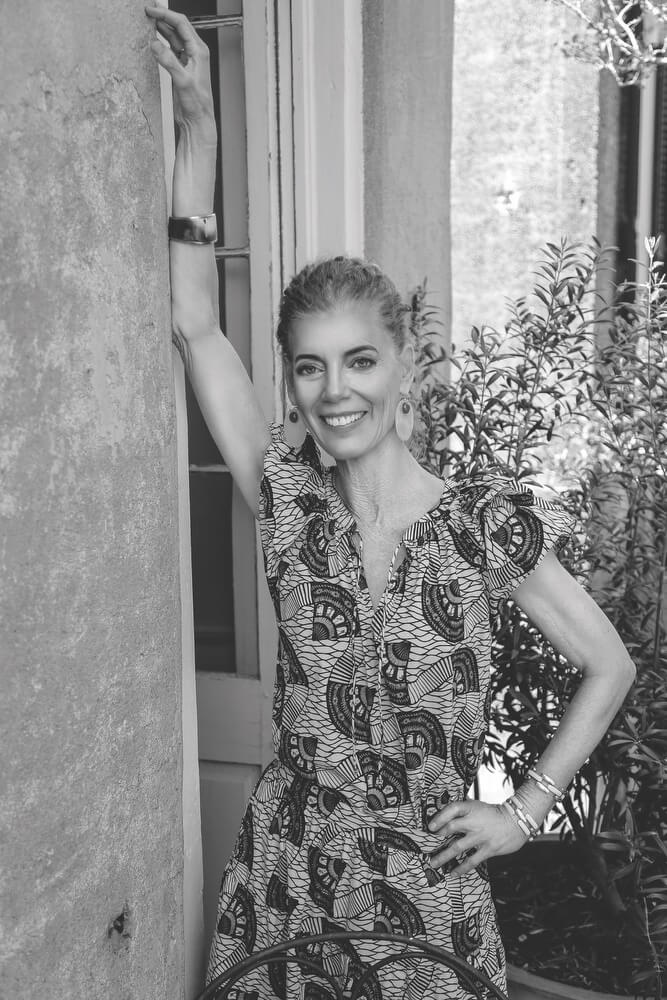
vie-magazine-suzanne-pollak
Timelessness and Trends
By Suzanne Pollak
In 2020, we started living inside our houses much more—so much more, every day felt like it could have been Wednesday. The trick I used to make each day uniquely enjoyable and make the seasons seem distinguishable (not easy in semitropical South Carolina) was regularly changing textiles on my windows, beds, and tables..
Decades ago, when I wanted advice on setting up a household, I did not look to my mother except to notice her nose going out of joint when friends reported buying new furniture every few years. I could see her point. If people bought pieces they loved, to begin with, they would not be changing their houses willy-nilly. Still, my mom was not the only one who taught me that furniture is timeless and textiles are trends.
That lesson came from two American businessmen whom I adopted as fantasy mentors. I craved greater authority on household matters and design than my mother could offer. As I cast around looking for teachers, I fell on these men who created such masterpieces that each of their houses turned into a museum when they passed. Although I lived in a two-room basement apartment at the time with no desire to ever make it a museum, I adopted John D. Rockefeller and Henry Dupont as my domestic disciples because they had philosophies on the art of living. That’s what I wanted to learn. I was used to a nomadic life and not sure what to do in more permanent living situations. Even though I could not possibly emulate either Mr. Rockefeller or Dupont, I could incorporate pieces of their philosophies and adapt to their ways of doing things.
Henry Dupont lived in a 175-room house in Delaware, now called Winterthur Museum. Dupont changed the textiles, from curtains to upholstery, in many of his 175 rooms (in one house!) four times per year. Rockefeller had another domestic desire. His wish was to eat on a different plate every night, so his china collection numbered 365, a set for every day of the year. I learned this fact from a docent at Bassett Hall, Rockefeller’s eighteenth-century farmhouse in Williamsburg, Virginia. His pantry was filled with glass cabinets stacked to the brim with plates. Of course, I didn’t have the means or space to copy these gents, but I learned why they did what they did. I got their gist. They used their design sense (and substantial financial resources) to create new environments in the rooms they lived in day and night. That is one beautiful way never to feel bored, to see your surroundings with fresh eyes, and to turn your house and life within those walls into a work of art.
Following John D.’s passion, I collected a ridiculous amount of china, which pleased me immensely and made setting the table incredibly fun.
More importantly, from Mr. Dupont, I learned to purchase furniture with an eye for the future and textiles with an eye for the present.
These men helped me, two generations after they lived, to design my domestic life. Wouldn’t they be surprised to know their ways of thinking about how to live in a house could help a twenty-year-old girl decades later, even while she lived in a basement?
Although I eventually got rid of my china collection (paring down can be as satisfying as building up), I still follow Dupont’s textile theories while I live in the tiniest house in Charleston—with a budget to match. You do not need a many-roomed mansion like Winterthur to incorporate the changing of textiles. You can change window treatments season by season. I use oversized, gossamer-thin Victorian linen napkins to cover the bottom half of windows in hot months and antique heavy linen sheets for winter bedroom curtains. Even with custom-made tasseled drapes and valances, tiebacks and inner sheers can change. Upholstered seating looks totally different when dressed in heavy linen slipcovers in the summer, correlating with the changing light and brighter hues.
Table linens are the easiest way to affect the vibe around the house all year because you have three meals and four seasons to play with. Dupont matched his curtains and linens to beloved flowers in the gardens directly outside the windows of particular rooms. The indoor-outdoor connection was vital to him. We don’t have to be that picky, but it’s great to take a cue from nature with colored napkins and a centerpiece to bring nature’s palette inside. I copy Dupont by paying greater attention to light—blinding bright in summer, diffused in winter, silvery in late fall—and thinking of textures to match the mood.
The whole point is for rooms to look stunning any time of year and to keep the dweller surprised and pleased.
These beliefs and practices allow you to sharpen your eyes and keep using your creativity.
Since one-third of our life is spent in bed, the bedroom is an excellent place to begin. Bed linens are easy to change, switching from prints to solids, from 100-percent linen to cotton and flannel. The average person spends about twenty-six years of their life sleeping, plus seven years trying to fall asleep, which adds up to at least thirty-three years between the sheets. The numbers make a compelling case for investing in quality bed linens and changing the mood and atmosphere seasonally, especially as the bedroom is a place for imagination and creativity, not the place to be productive. Mae West mirroring her bedroom ceiling to see how she was doing was one thing, but the modern practice of using devices to monitor sleep brings too much “production” into an otherwise restful place.
In practical terms, using textiles during only part of the year stretches their lifespan and offers you time to clean and care for them. Best of all, we can all be more like Mr. Dupont and periodically give our houses a different look. And it need not be expensive; for under one hundred dollars at IKEA, you can change every pillow or choose a new area rug. You should even have some budget left over for a fun set of plates.

— V —
Suzanne Pollak, a mentor and lecturer in the fields of home, hearth, and hospitality, is the founder and dean of the Charleston Academy of Domestic Pursuits. She is the coauthor of Entertaining for Dummies, The Pat Conroy Cookbook, and The Charleston Academy of Domestic Pursuits: A Handbook of Etiquette with Recipes. Born into a diplomatic family, Pollak was raised in Africa, where her parents hosted multiple parties every week. Her South Carolina homes have been featured in the Wall Street Journal Mansion section and Town & Country magazine. Visit CharlestonAcademy.com or contact her at Suzanne@CharlestonAcademy.com to learn more.
Share This Story!
KEEP UP WITH THE LATEST STORIES FROM VIE


















































































































































